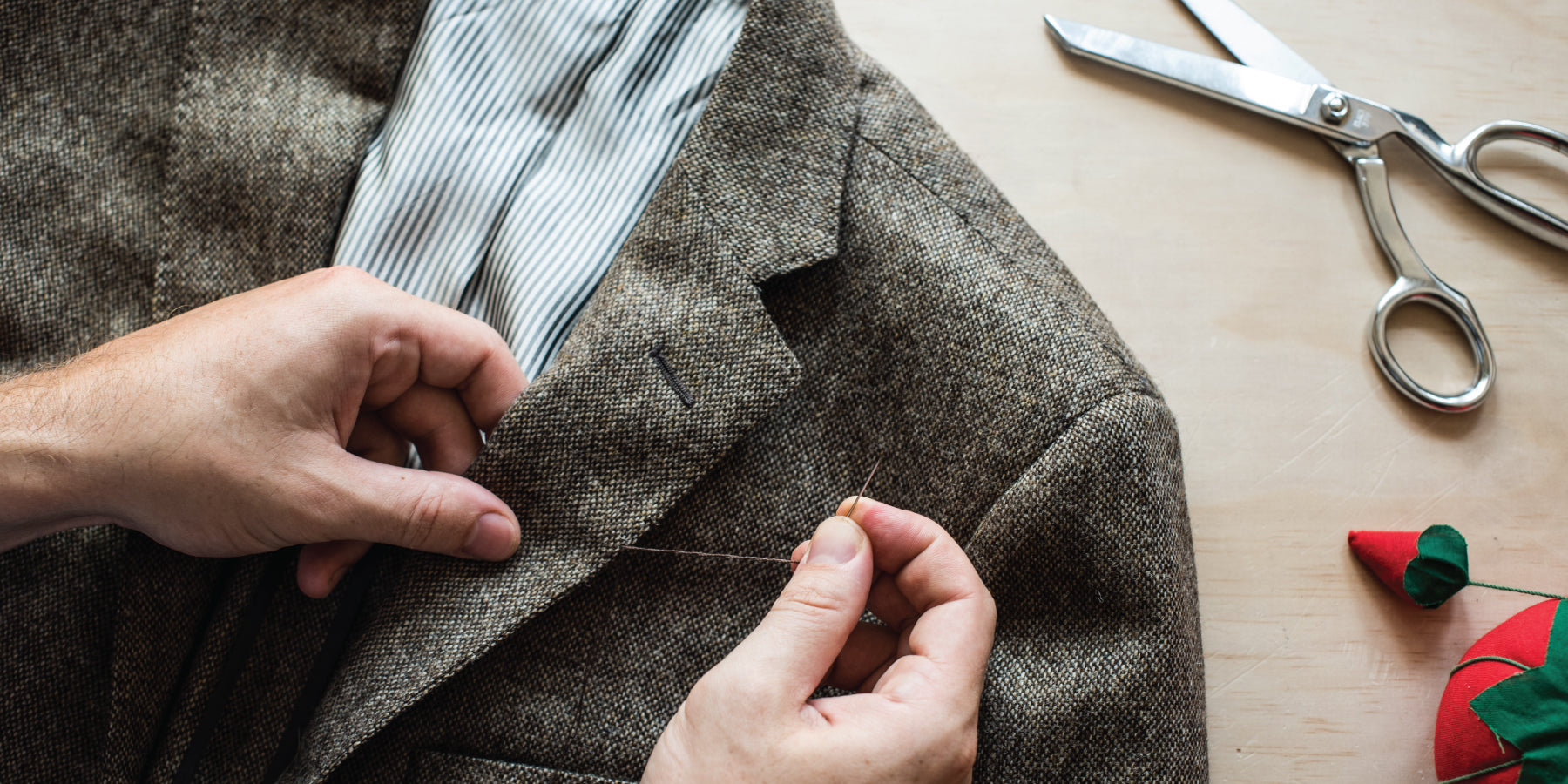Often what distinguishes a well-made suit from all the others is simply a matter of details. Generally speaking, the more handwork that goes into a suit, the better the quality and, naturally, the higher the price.
In a world where industrial technology allows manufacturers to produce suits in a few quick steps all automated by machines, old-school handwork is a good litmus test for quality. You can generally assume that a clothier who takes the time and effort to do things by hand is also not cutting corners when it comes to things like quality of cloth, linings, threads, buttons, etc.
The good news is, handwork can be seen and felt by the trained buyer. Here are a few things to look for to determine if a suit is well-made or not.
1. Hand-Made Button Holes
Also called “Milanese buttonholes”, these are very sharp and sleek. It takes roughly 45 minutes to finish one hand-made buttonhole, but it’s worth every minute for how much cleaner they look than their rough-edged, machine-sewn counterparts.
2. Smooth Lapel Roll
One of the advantages (and signs) of a hand-set chest canvas in a jacket is the smooth roll of the lapel. Rather than a cheap hard-pressed crease, the roll creates a nice fluid dimension to the garment that will eventually form to the shape of the wearer.
3. Self Lining
An unlined jacket is actually more difficult, and expensive, to produce. All of the interior seams have to be clean-finished (since they are visible and exposed against the body) and larger pieces of suiting fabric are needed for the front panel facings (where much cheaper lining fabric is typically used).
4. hand-Set Collar
The collar is the the most important piece of the jacket in terms of balance and fit. A good jacket has a collar that has been eased and set by hand. Flip up the lapels and take a look. Often times, on a high quality jacket, you can see hand stitches at the base. In the case above, notice the little “fold-back” of the glenplaid fabric over the collar felt. This method is almost always done by hand; the fold-back is actually seam allowance which would allow a good tailor to re-cut or re-shape the collar after a fitting, if needed.
5. Genuine Horn Buttons
If a suit maker is using cheap plastic buttons to finish their garment, then you can assume they are doing things cheaply elsewhere as well. A good suit has genuine horn buttons (usually buffalo horn). Also, the front buttons should be sewn with a thread shank (a stem of twisted thread) which provides space for the fabric to drape in between the button and the garment when fastened.
6. Surgeon's Cuffs
Back in the day, functioning sleeve buttons were a sign that a jacket was tailor-made for the wearer. It showed attention to detail in terms of construction and style. Today, however, it is being replicated on off-the-rack garments to signal quality, despite all the other mass-production elements and the general fact that it makes it much more difficult to alter the sleeve length.
7. Seam Allowance
The majority of the cost of a suit comes down to the amount of fabric used. This means that cheap suits contain very little, if any, additional fabric under the seams to be “let out” by a tailor. A well-made jacket has ample seam allowance to accommodate for alterations, should the wearer gain a few pounds or need a little more breathing room. Notice the 1/4 lined jacket above: the center back seam has a good inch of extra fabric and even the side panel seams have room to play with.
8. Pic Stitching
Those little “puckers” around the edge of the lapels, those are all done by hand. Pic stitching is purely aesthetic, but it shows an attention to detail and craftsmanship. If they are a little imperfect and slightly inconsistent, that’s okay; there is beauty in imperfect handwork. On another note, this photo also shows another beautifully handmade buttonhole.
Thanks for reading.
Yours in style,
Dan Trepanier

